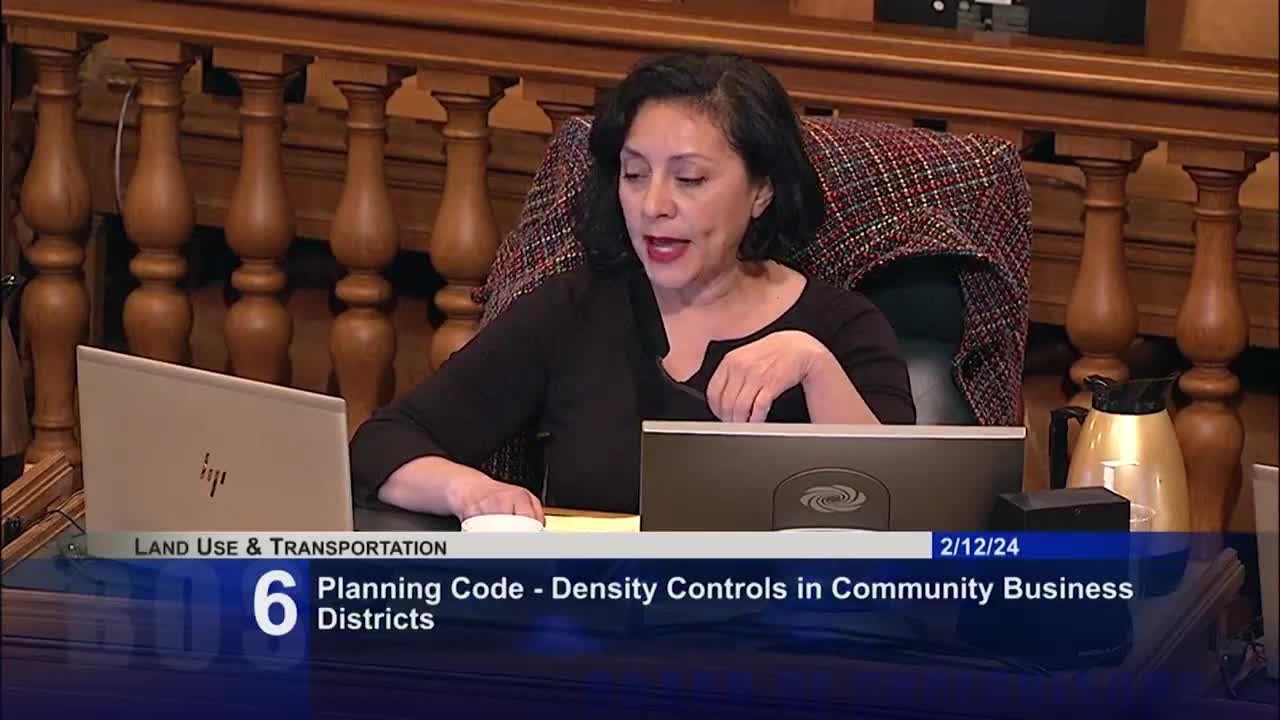City official warns against risks of exempting historic areas from housing development incentives
February 12, 2024 | San Francisco County, California

This article was created by AI summarizing key points discussed. AI makes mistakes, so for full details and context, please refer to the video of the full meeting. Please report any errors so we can fix them. Report an error »

In a recent San Francisco County government meeting, a heated discussion unfolded regarding the implications of new housing legislation aimed at transforming vacant commercial spaces into residential areas. The atmosphere was charged as officials grappled with the balance between development incentives and the preservation of historic neighborhoods.
One council member raised concerns about setting a "dangerous precedent" for communities that wish to preserve their historic character while still benefiting from state density bonuses designed to encourage housing development. This sentiment echoed a broader anxiety about how such exemptions could impact the city’s housing promises and overall equity in urban planning.
Another official, President Peskin, countered these worries by clarifying that the legislation in question was not part of the housing element but rather a targeted response to specific challenges faced in downtown San Francisco. He emphasized that the area under discussion has historically been a commercial zone, lacking residential development since its inception. The intent, he argued, was to streamline the conversion of vacant commercial properties into homes, thereby addressing the pressing housing crisis.
The conversation highlighted the complexities of urban development, particularly the tension between maintaining the integrity of historic neighborhoods and the urgent need for more housing. As officials navigated these issues, they acknowledged the potential risks of combining density decontrol with state incentives, which could lead to unintended consequences in various neighborhoods across the city.
As the meeting concluded, the council members were left to ponder the future of San Francisco’s urban landscape, balancing the need for growth with the preservation of its rich history. The discussions underscored the ongoing challenge of creating a city that honors its past while adapting to the demands of a growing population.
One council member raised concerns about setting a "dangerous precedent" for communities that wish to preserve their historic character while still benefiting from state density bonuses designed to encourage housing development. This sentiment echoed a broader anxiety about how such exemptions could impact the city’s housing promises and overall equity in urban planning.
Another official, President Peskin, countered these worries by clarifying that the legislation in question was not part of the housing element but rather a targeted response to specific challenges faced in downtown San Francisco. He emphasized that the area under discussion has historically been a commercial zone, lacking residential development since its inception. The intent, he argued, was to streamline the conversion of vacant commercial properties into homes, thereby addressing the pressing housing crisis.
The conversation highlighted the complexities of urban development, particularly the tension between maintaining the integrity of historic neighborhoods and the urgent need for more housing. As officials navigated these issues, they acknowledged the potential risks of combining density decontrol with state incentives, which could lead to unintended consequences in various neighborhoods across the city.
As the meeting concluded, the council members were left to ponder the future of San Francisco’s urban landscape, balancing the need for growth with the preservation of its rich history. The discussions underscored the ongoing challenge of creating a city that honors its past while adapting to the demands of a growing population.
View full meeting
This article is based on a recent meeting—watch the full video and explore the complete transcript for deeper insights into the discussion.
View full meeting
